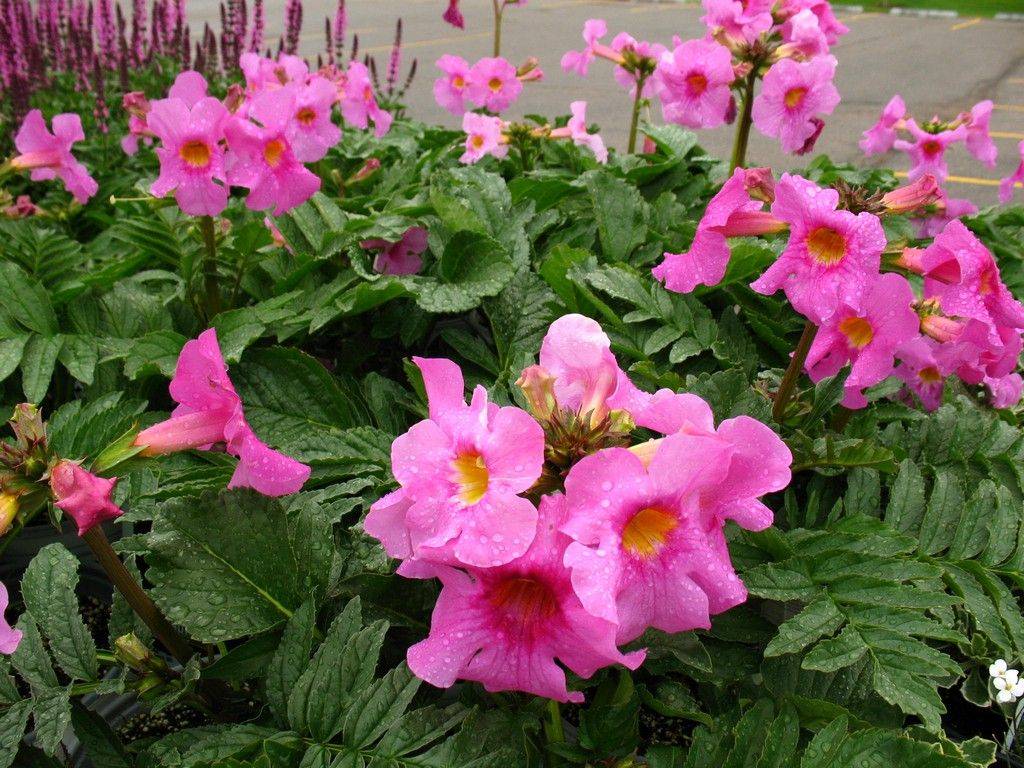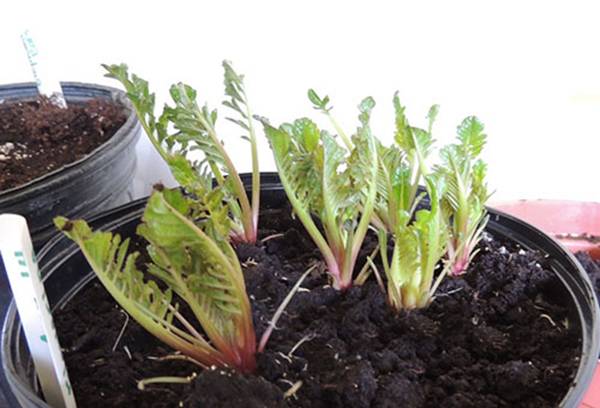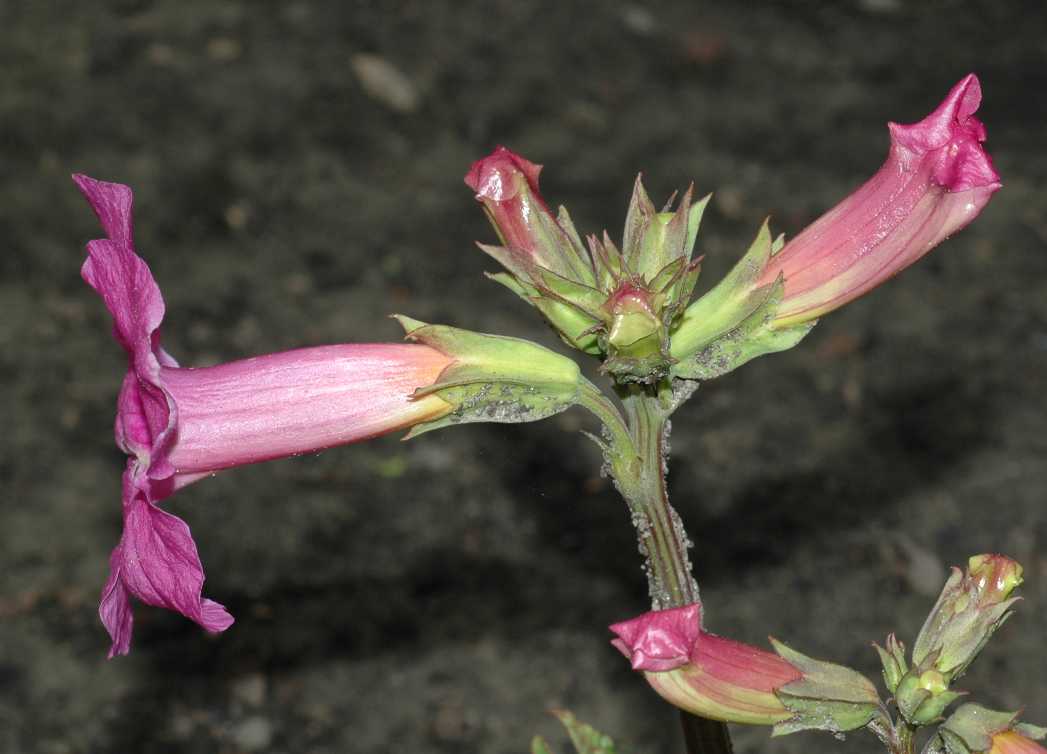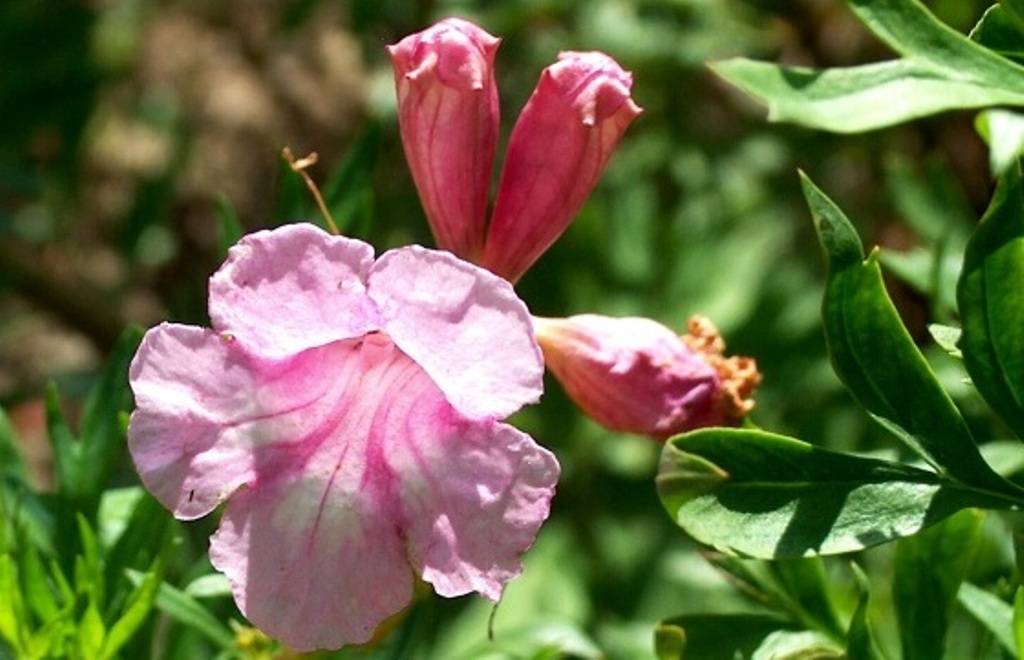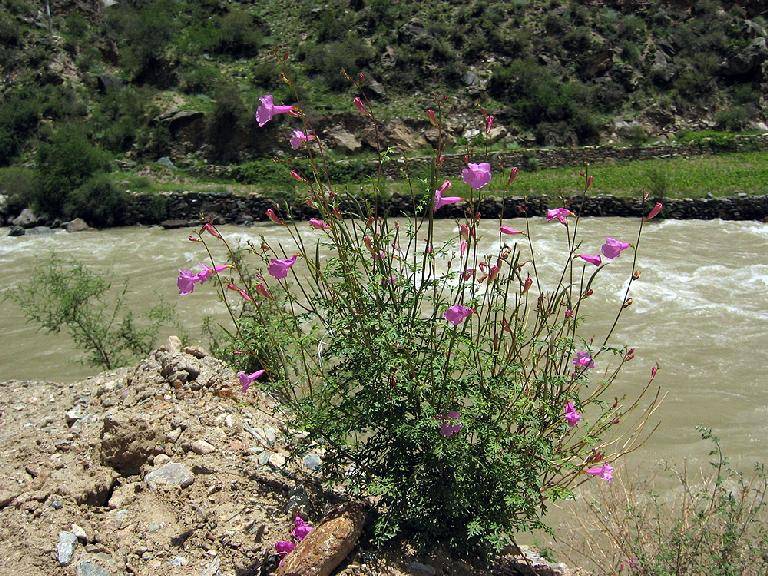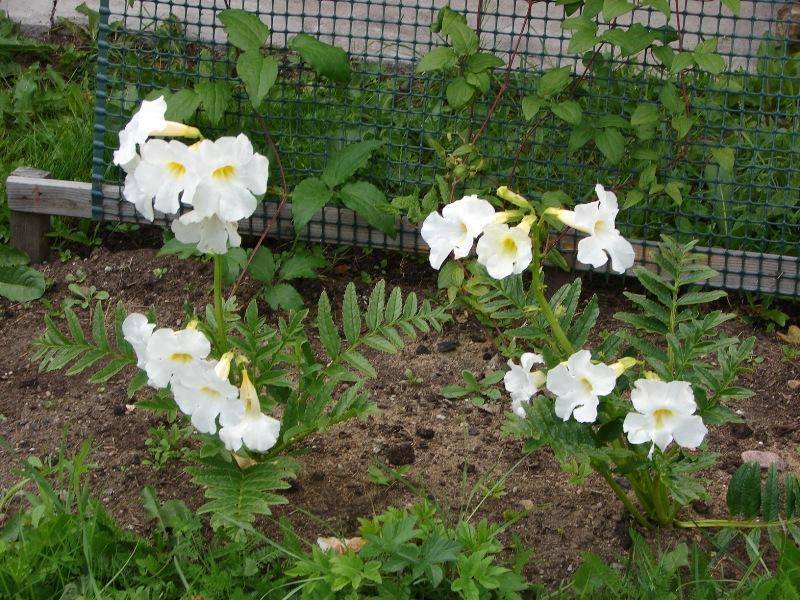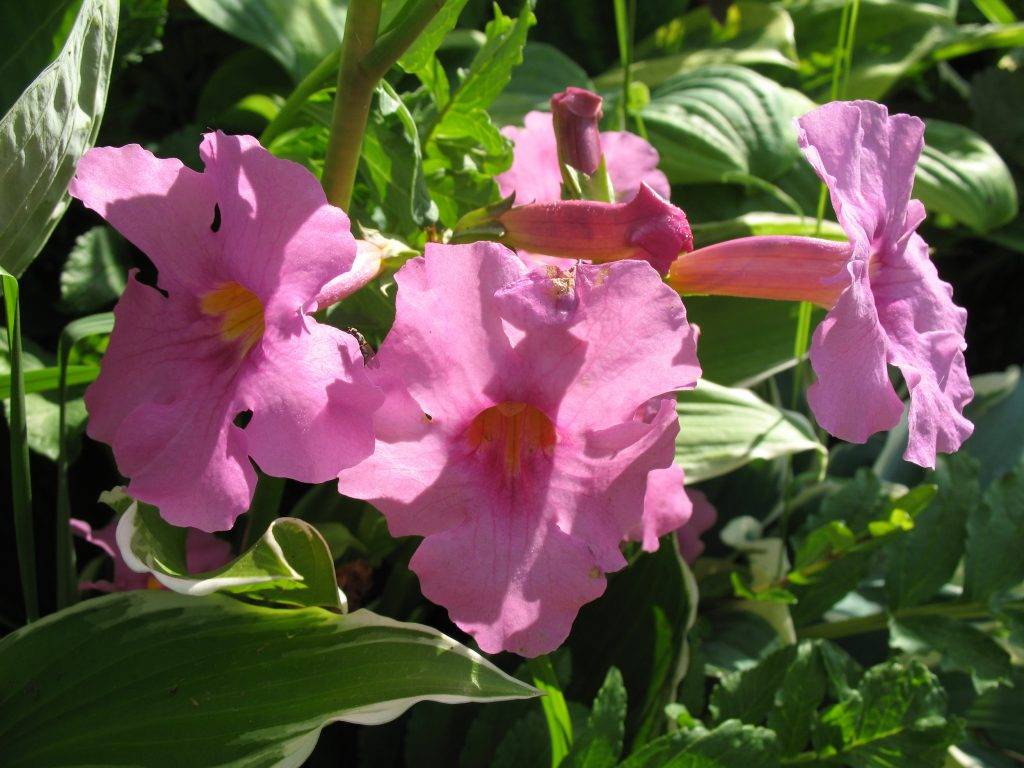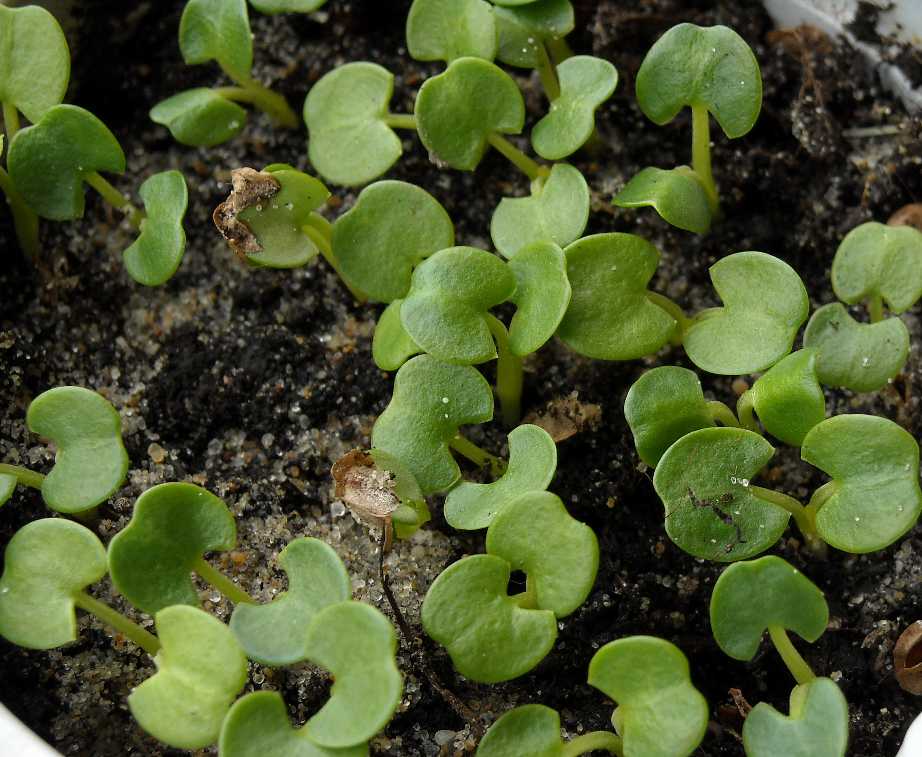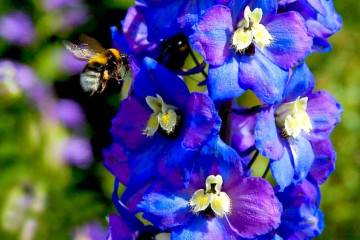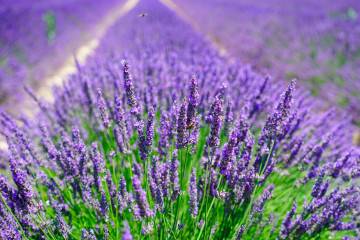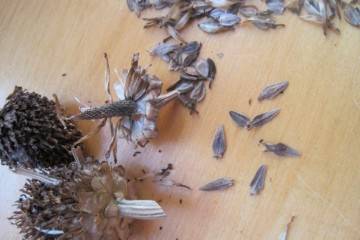Incarvillea Delavayi - growing from seed
Content:
- What does Incarvillea Delaway look like?
- Common varieties of Incarvillea
- The healing properties of Incarvillea
- Features of caring for Incarvillea at home
- When and how Incarvillea blooms
- Reproduction of incarvillea
- Incarvillea Delaway: planting and care in the open field
- Incarvillea: planting and care in a reckless way
- Transfer
- Possible growing problems
This perennial is native to Southeast Asia. It has long been used in ornamental gardening, but it came to the European market relatively recently and remains a rarity so far. Incarvillea Delaway is a flower that can surprise and impress when you want to refresh the flower garden with a special novelty.
What does Incarvillea Delaway look like?
Incarvillea is called garden gloxinia, which is fundamentally incorrect, since the Delavey Incarvillea species (lat.Incarvillea delavayi) belongs to the genus Incarvillea (lat.Incarvillea), which is part of an independent family of Bignoniaceae (lat.Bignoniaceae). The flower was first included in the botanical classification in 1891.
A perennial herb has woody or tuberous roots. In one place it can grow up to 5 years. The aerial part is capable of reaching a height of 2 m. Large dark green leaves are collected in basal rosettes, but can be arranged alternately along the stem. The shape of the leaf plate is unpaired-finger-dissected. The edges of the leaves are finely toothed.
The buds are collected in racemose or paniculate inflorescences that have bracts. The flowers are tubular with a bilaterally symmetrical corolla. There are 4 stamens, and the pistil has a bare stigma divided in two. The color of the corollas is pink, crimson, purple.
Common varieties of Incarvillea
In landscape design, several varieties of Incarvillea have become widespread, in addition to Delaway. All of them require similar conditions of detention and differ from each other in terms of flowering.
Olga's Incarvillea (lat.Incarvillea Olgae)
The plant cultivated since 1880 was found in the Pamir-Altai. The height of the aboveground part is up to 150 cm. The bare stem branches and woods at the base. The leaves are dimorphic: pinnately dissected at the base, and solid on top. Paniculate inflorescence 25 cm long consists of buds with red-pink corollas, reaching 2 cm in diameter. Flowering occurs in early July and lasts up to 7 weeks.
Incarvillea Chinese (lat.Incarvillea Sinensis)
For centuries in the Asian region, this flower has been cultivated in home gardens. All the way from Tibet to Manchuria, all sorts of varieties of Chinese Incarvillea were cultivated, both annuals and perennials, the description of not all reached the Russians.
On average, the height of the bush does not exceed 30 cm. The most common flower colors are creamy white and crimson (purple).On average, only 10 weeks pass from sowing to flowering, and it does not stop for at least 6 weeks in a row. Some wilted peduncles are replaced by others. The White Swan variety is popular, in which the flowers are painted in a creamy white shade.
Incarvillea Snowtop
A variety of Delawie incarvillea, which differs from others in its large creamy white flowers, reaching 6 cm in diameter. A perennial up to 60 cm in height has long pinnately dissected leaves (up to 20 cm) with pointed tips that are very much like a fern.
The healing properties of Incarvillea
In Chinese traditional medicine, only the species Incarvillea Sinensis is used. From the aerial part, infusions are made, which are used externally in the treatment of rheumatism, as well as for rinsing the mouth and larynx for various inflammatory diseases (angina, pharyngitis, etc.).
Briefly about history
The genus of Incarville got its name thanks to A.L. de Jussieu, who invented it from the surname of P.N.D'Incarville (a famous botanist). It was D'Incarville who brought the seeds of the plant from his trip to China in 1728.
Features of caring for Incarvillea at home
The predominant planting method is seedling. After this, the plant can remain in one place for many years, winter, and produce a large number of seeds.
Watering
Watering is done sparingly as needed. The plant needs a regular supply of moisture, but does not tolerate drought and overflow.
Spraying
Spraying foliage is not recommended, because if moisture gets on the flowers and buds, this can lead to a loss of their attractiveness.
Humidity
The flower grows well in high humidity, but it can do without it, since a powerful root system provides the need for water.
Priming
Incarvillea is undemanding to soil, it is much more important to take care of its looseness. For this, baking powder is added to the soil: sand, wood ash.
Top dressing
After planting seedlings (in May), the first feeding is carried out with complex mineral fertilizer. The second feeding is carried out at the stage of bud formation. Then, after 2-3 weeks, they are fed with a solution of mullein or bird droppings.
Features of winter care during the rest period
In temperate latitudes, Incarvillea winters outdoors. It is recommended for plants of the first year of life to remove leaves and stems after wilting of the aerial part, and then mulch the soil with a layer of 7-10 cm.
When and how Incarvillea blooms
The buds begin to form at the end of May. Inflorescences are formed on long peduncles. The number of buds in a panicle or brush depends on the variety.
Types of flowers
All flowers at Incarvillea are divided into two groups: from five petals fused into a tube, or a tubular corolla with a wide, integral edge curved outward. The color is usually monochromatic.
Flower shapes
The size of the flower depends on the variety and ranges from 2-6.5 cm. It has a bracts, 4 stamens are hidden in the tube. Not all pollinators can get inside such a flower, but the pleasant light scent attracts them in large numbers.
Flowering period
Different varieties may differ in the start date of flowering, but it lasts at least 6-8 weeks. The exact timing of flowering can be shifted due to weather.
Changes in care during flowering
When the buds begin to bloom, you should be especially careful about watering. Drying out of the roots leads to the rapid withering of flowers that did not even have time to bloom, and waterlogging leads to the appearance of rot.
Reproduction of incarvillea
The species reproduces by seeds, leaf cuttings and tuber division. The seedling method is the most common, since it is extremely difficult to find tubers on sale.
Seedling planting instructions
Seedlings are grown at a temperature of 18-20 ° C. The germination time is 7-15 days. Experienced gardeners advise sowing in a peat pot so that later the seedlings can be transplanted into open ground with it. This is done because the root system is sensitive and sick for a long time after injury.
A pick when sowing into a common bowl is performed when 3-4 leaves appear at the seedlings. They are transplanted into open ground in late spring - early summer, when the air temperature is 15 ° C. Before that, hardening is performed for a week, continuing to look after in the usual way.
Germinating seeds
Incarvillea seeds are distinguished in the first year by a very high germination rate. They are buried in the soil by a maximum of 1 cm, sprinkling them with calcined sand on top. But before that, they are subjected to stratification for 45-60 days. The optimal mode is in the refrigerator (4 ° C), where a bowl with seeds and wet sand is placed in the middle of winter.
Incarvillea Delaway: planting and care in the open field
Sowing can also be carried out in open ground, usually at the end of spring. When the soil warms up to 15 ° C, the seedlings will appear very amicably.
Incarvillea: planting and care in a reckless way
The tubers are divided in March or September. The bush is removed from the soil and cut into pieces, leaving at each a point of renewal and at least one tuber. Sections are disinfected with crushed coal. Planting is carried out immediately, deepening the growth points by 4-5 cm into the soil.
Incarvillea can be propagated by leafy cuttings in the summer (in June-July). You will need a leaf with a part of the stem 3-5 cm long. The cut is dipped into a rooting stimulator (root). Planting is carried out immediately in a greenhouse filled with a mixture of peat and sand. With the appearance of roots and a leaf outlet, the shelter can be removed. A young bush will bloom in a year.
Transfer
To enhance the splendor of flowering and extend the life of the bush, it is transplanted every 3-4 years. This is usually done in the last decade of August. At the same time, the root collar is not buried, placing it flush or slightly above the surface of the bed.
Possible growing problems
The appearance of a flower directly indicates its well-being, so it will not be difficult to understand the cause of the problem.
Why does the Incarvillea flower shed buds and leaves?
A clear sign of a lack of moisture, nutrients. The plant should be watered, and with repeated watering, a complex mineral fertilizer should be introduced.
Leaves turn pale
If the usual dark green color has become lighter, this indicates chlorosis that occurs with a lack of lighting and iron deficiency in the soil. You can transplant the plant to a lighter area and feed it with iron chelate.
The tips of the leaves dry
Drying too long, even with regular watering, can cause the leaves to dry out. You don't have to do anything. After rain, when the humidity rises, the plant will return to normal.
The lower leaves fall
The first symptom of root decay. It is necessary to reduce watering, and treat the flowers with a solution of a broad-spectrum fungicide.
Pests
Garden pests (scale insects, spider mites, mealybugs, etc.) can infect the leaves and flowers of Incarvillea. For prevention purposes, it is recommended to treat the flower garden with insecticides and acaricides: fitoverm, actara, spark, etc.
Other problems
Yellowing of the leaves and rapid wilting may indicate the defeat of the roots by beetles, a bear. In such cases, a change of place or special traps for insects helps.
The sophisticated decoration of the Delaway Incarville flower bed attracts the attention of gardeners who want to diversify the species composition of their flower beds. Perennial deserves high marks for lush, long flowering, variety of colors and varieties.
